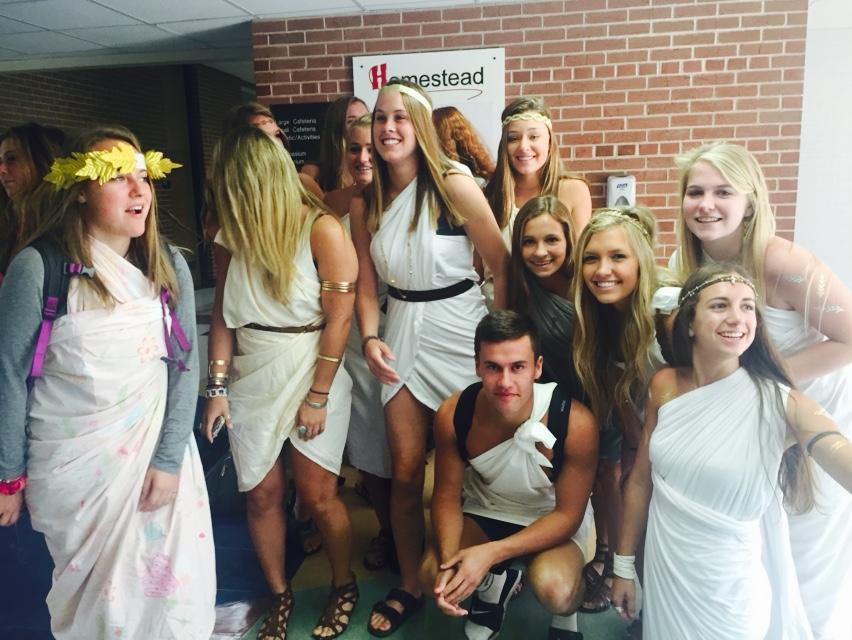Students unwrap the toga tradition
Sam James, Ellie Trau, Mary Kate Simon, Sara Wirthlin, Jordan Ellerbrock, Sam Brink, Kelsey Jacobus and Chandlar Strauss embrace the toga day tradition.
Kicking off Homecoming Spirit Week, Senior Toga Day serves as a tradition across the nation. Wrapped in white bedsheets and decorated with golden flash tattoos, the class of 2016 embraces this ritual. Like wealthy ancient Romans, only the highest class adorns the toga, or, as Ryan Baranko, senior, said, “[Togas] symbolize people of high status ruling over peasants.”
Toga Day’s meaning, according to Lauren Miller, senior, is not entirely clear to students. Miller said, “We kind of had to wear togas. It’s just a thing. No one knows why we actually do it.”
While it’s hard to truly pinpoint the meaning and origin of the tradition, the history of the garment of honor itself offers an explanation for the symbolism of the widespread practice.
Togas, a staple dating back to the Roman Empire, symbolize wealth and high stature. Only worn by elite members of society, the Roman garb, according to Peter T. Struck, the Associate Professor of Classical Studies at the University of Pennsylvania, “was forbidden to exiles and to foreigners,” and “it was indispensable on all official occasions, even in imperial times, when more convenient garments had been adopted for ordinary use.”

Molly Riebau is the Editor-in-Chief of The Highlander Newsmagazine. Aside from journalism, she loves watching The Bachelor (more than any...












